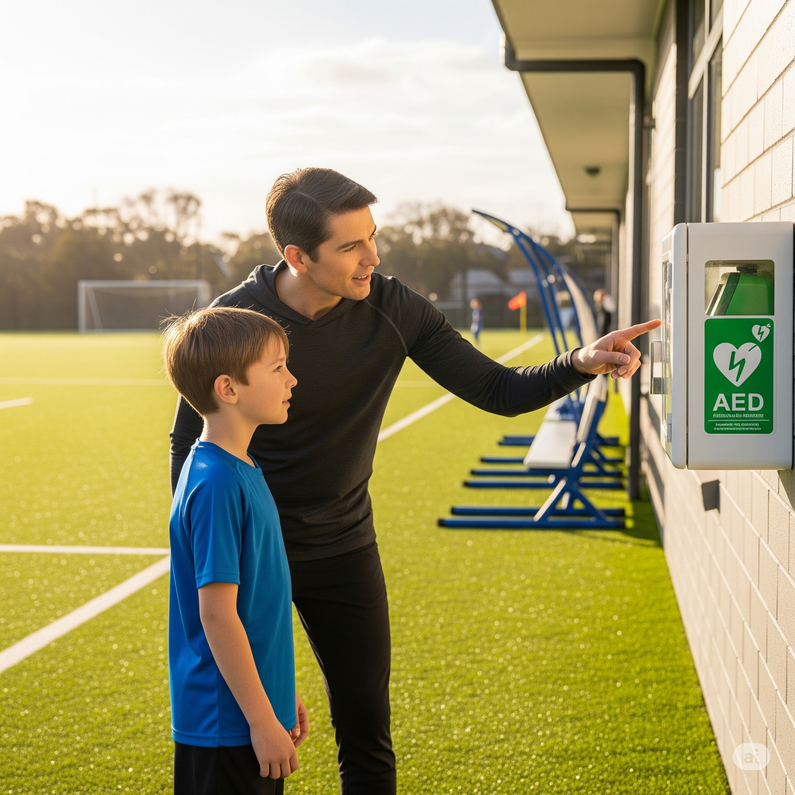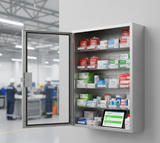3 Simple Ways Parents Can Save Lives on the Sports Field
As a parent, your top priority is keeping your child safe, especially when they're participating in sports. But there's a serious risk that many people aren't aware of: sudden cardiac arrest (SCA). This is a leading cause of death among young athletes, and it can happen without any warning. Being prepared can make all the difference and save a life.
Here are three practical steps parents can take to be proactive and help create a safer environment for young athletes.
1. Ask About AEDs and Emergency Plans
An Automated External Defibrillator (AED) is the only device that can restart a heart during SCA. For every minute that passes without defibrillation, a person's chance of survival decreases by 10%. This is why knowing if an AED is available and ready to use is crucial.
Questions to ask your child's coach, team, or school:
-
Is there an AED on-site at all practices and games?
-
Is it easily accessible, and are key staff trained to use it?
-
How often is the AED checked to ensure it's functioning correctly?
Don't make assumptions. If you find that an AED isn't available or accessible, consider advocating for one in your community or school. AEDs should be clearly visible and reachable within three minutes of any playing area.
2. Learn CPR and Trust the AED
Having a basic understanding of CPR is vital, as it can keep blood flowing to the brain and heart until emergency services arrive. However, in a high-stress emergency, it can be hard to remember the correct steps.
This is where an AED becomes an invaluable tool. These devices are designed for anyone to use, even without medical training. They provide clear, step-by-step audio and visual prompts to guide you through both CPR and the defibrillation process. The combination of CPR and an easily accessible AED gives bystanders the confidence and tools they need to act quickly and potentially save a life. Remember, emergency responders often take more than seven minutes to arrive, so immediate action is critical.
3. Talk to Your Child About SCA and AEDs
It's important to have an open conversation with your child about the potential warning signs of SCA, such as unexplained fainting, chest pain, or shortness of breath. These symptoms should never be ignored. Teach them to immediately tell an adult if they experience or witness any of these signs.
Equally important is teaching your child about what an AED is and where to find one. Empower them by helping them locate the nearest AED at their school, gym, or sports facility. Reassure them that an AED's clear, built-in instructions make it possible for anyone to use it in an emergency. Starting this conversation early builds confidence and helps create a culture of safety for everyone.
Sudden cardiac arrest can happen anytime, anywhere—and often without warning. As a parent, you don’t need to be a medical professional to help save a life. By asking the right questions, learning basic CPR, and starting the conversation about AED awareness, you can help create a safer environment for every child. Preparation helps save lives—and it starts with you.
Recent Posts
-
Beyond the Big Box: Why Yoursafetycompany.com is the Smarter Choice for Your First-Aid Program
When it comes to workplace first aid, ensuring your business is compliant and your employees are pro …1st Jan 2026 -
The 2026 Safety Checklist: Is Your Crew Truly Protected?
As we move into the new year, it’s the perfect time to look past the daily grind and evaluate the ge …23rd Dec 2025 -
Beyond the Buzz: Why Proper Hearing Protection is Non-Negotiable on Your Job Site
On any given workday, the sounds of progress—drills, saws, heavy machinery, and even loud conversati …22nd Dec 2025



